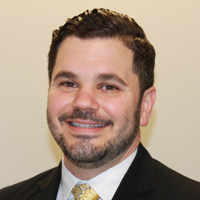5 Key Considerations as You Craft Your Retirement Plan
No retirement plan is complete without covering these five key areas.


Stashing away money for retirement is both smart and necessary to increase the odds that you will be financially secure once your working career comes to an end.
But the act of saving money is not in itself a retirement plan. You also need to be intentional in establishing how much money you will need, when and how you will spend it, how taxes might affect you, and a host of other issues.
Let’s look at five key areas you should think about as you carefully produce a retirement plan that can serve you well when you finally take that step into your post-working years.

Sign up for Kiplinger’s Free E-Newsletters
Profit and prosper with the best of expert advice on investing, taxes, retirement, personal finance and more - straight to your e-mail.
Profit and prosper with the best of expert advice - straight to your e-mail.
1. Income distribution
A top concern among retirees is running out of money, so it’s critical to take steps to make your money last. But how do you do that, especially now that the once-popular 4% rule is falling out of favor in some quarters? Dr. David Babbel, professor of finance at the Wharton School, puts it this way: “If you have a stock portfolio and withdraw a fixed amount per year, such as the standard rule of 4% plus inflation, you have a 90% chance of running out of money in retirement.”
While it would be nice to think a magic-bullet investment exists that could fix this problem, there isn’t one. That ideal investment would be safe, liquid and would show strong growth. Investments typically will do some combination of two of those, but no investment will do all three.
One of the most effective ways to make your money last is to separate your investments into different asset classes to accomplish different goals. This means that you would set aside, into income-producing vehicles, the lowest amount necessary to produce the monthly income you need above and beyond Social Security and pensions. You would also have an emergency fund of at least six to 12 months plus any known upcoming big expenses. And the rest of your money would be in a growth portfolio to hedge against inflation.
2. Tax mitigation plan
The IRS doesn’t lose interest in you when you reach retirement; in fact, a portion of your Social Security may be taxable, depending on how much other income you have. Therefore, it’s important to continue to find ways to reduce your tax bill. Instead of micro tax planning, you need macro tax planning – focusing on the big picture of what your tax-deferred accounts are going to cost you over your lifetime. Explore how each of your investments is taxed, and create a written plan for the most tax-efficient way of withdrawing money from accounts in retirement.
3. Readjusting your portfolio for retirement needs
Throughout your working years, you may have relied on an aggressive investment strategy, taking calculated risks so you could see substantial growth in your retirement savings. But as you near and enter retirement, it’s time to ease up on the risk. Your goal is no longer to grow your money but to hang on to what you have. The time has arrived to begin shifting your portfolio into more conservative investments.
This might also be a good time to reconsider which financial professional you are working with. Some advisers are more focused on accumulation – piling up as much money as possible for you – while others are more skilled at income planning – making sure that the money you accumulate lasts.
4. Health care planning
Both health care and long-term care costs can eat away at your savings. It’s especially important for retirees to know the complex ins and outs of Medicare, for which you become eligible at age 65. For example, if you don’t enroll in Medicare during your initial enrollment period, you could face premium penalties.
Also, it’s important to know that Medicare doesn’t cover everything, and one thing it doesn’t cover is long-term care. You will need another plan – savings, long-term care insurance, or other alternatives – to deal with that. Maybe you will never need long-term care, but the odds say you will. Someone who turns 65 today has a 70% chance of needing some type of long-term care services at some point in their lives.
5. Estate planning
None of us likes to dwell on this, but eventually our lives come to an end. It’s vital to have a plan in place so that the right assets get left to the right people in the right way. Perhaps surprisingly, even the wealthy and the famous fall short with this sometimes. When Prince died in 2016, it was discovered he had no valid will, and his sizable estate has been in litigation ever since.
Closer to home, I’ve seen situations where a property wasn’t titled correctly, causing problems for heirs. Tanya Bell, of Bell Law Firm, P.A., says, “Having a properly crafted estate plan can assist your family in avoiding the substantial expense of the lengthy probate or guardianship proceedings. One of the biggest problems we see at Bell Law Firm is that many people don’t ever fund their trusts.” When you fund a trust, you transfer ownership of assets from you to your trust. If that doesn’t happen, your beneficiaries will end up in probate, something you likely wanted to avoid by setting up the trust.
Certainly, creating a retirement plan that covers all the bases can be complicated, so consider conferring with a financial professional who understands the best strategies for making your money last. You don’t want all those years of investing and saving to go to waste.
Ronnie Blair contributed to this article.
Disclaimer
The appearances in Kiplinger were obtained through a PR program. The columnist received assistance from a public relations firm in preparing this piece for submission to Kiplinger.com. Kiplinger was not compensated in any way.
Get Kiplinger Today newsletter — free
Profit and prosper with the best of Kiplinger's advice on investing, taxes, retirement, personal finance and much more. Delivered daily. Enter your email in the box and click Sign Me Up.

Anthony Landi, co-founder of Sterling Bridge Financial Group, has 13 years of experience as a financial professional. As a fiduciary, he carries a legal obligation to do what’s best for clients. Landi has a Chartered Federal Employee Benefit designation, which allows him to create personalized financial strategies for clients in the Florida Retirement System.
-
 5 Easy Weatherproofing Projects That Help Prevent Damage and Save on Insurance
5 Easy Weatherproofing Projects That Help Prevent Damage and Save on InsuranceProtect your home from storms and water damage with these simple weatherproofing upgrades — some may help reduce your home insurance premium.
By Paige Cerulli
-
 If Trump Fires Jerome Powell, What Happens To Savings and Mortgage Rates?
If Trump Fires Jerome Powell, What Happens To Savings and Mortgage Rates?President Donald Trump expressed his desire to remove Fed Chair Jerome Powell. If the president is successful, how would it impact your savings accounts?
By Sean Jackson
-
 Four Takeaways From Filing Your Taxes to Boost Your Financial Future
Four Takeaways From Filing Your Taxes to Boost Your Financial FutureNow that another tax season is in the rearview mirror for most of us, what lessons can you take from what you learned about your finances to plan for the future?
By Kate Winget
-
 What Claims Adjusters Are Thinking vs What They're Saying
What Claims Adjusters Are Thinking vs What They're SayingAfter a natural disaster, few of us are at our best, but here's what to keep in mind when you're interacting with your insurance company's claims adjuster.
By Karl Susman, CPCU, LUTCF, CIC, CSFP, CFS, CPIA, AAI-M, PLCS
-
 Looking to Make a Job Change? How to Stand Out Like a Pro
Looking to Make a Job Change? How to Stand Out Like a ProTo make a strong first impression in interviews or when networking, skip your job title and work history and use an opening gambit that highlights your talents.
By Anne deBruin Sample, CEO
-
 First 100 Days: Trump's Impact on Your Finances
First 100 Days: Trump's Impact on Your FinancesHere are some opportunities to consider regarding investing, interest rates and tax cuts as the financial landscape shifts under the new administration.
By Daniel Razvi, Esquire
-
 What Would Happen if You Put Your Tax Refund in an IRA?
What Would Happen if You Put Your Tax Refund in an IRA?Not only could you get a tax break, but the compounding effect over 35 years could turn the average refund into nearly $14,000.
By Romi Savova
-
 Children Can't Afford to Fly the Nest? Here's How to Help
Children Can't Afford to Fly the Nest? Here's How to HelpThe high cost of living means more adult children are staying at home. Here are four ways to help financially so they can eventually spread their wings.
By Kelli Kiemle, AIF®
-
 A QLAC Does So Much More Than Simply Defer Taxes
A QLAC Does So Much More Than Simply Defer TaxesHere are the multiple ways you can use a QLAC, from managing retirement risks to creating income for specific retirement needs and wants.
By Jerry Golden, Investment Adviser Representative
-
 Self-Directed Brokerage Accounts: Retirement's Hidden Gem?
Self-Directed Brokerage Accounts: Retirement's Hidden Gem?SDBAs are often overlooked, but they can offer more flexibility and growth potential inside your 401(k) when actively managed by a professional.
By Scott M. Dougan, RFC, Investment Adviser